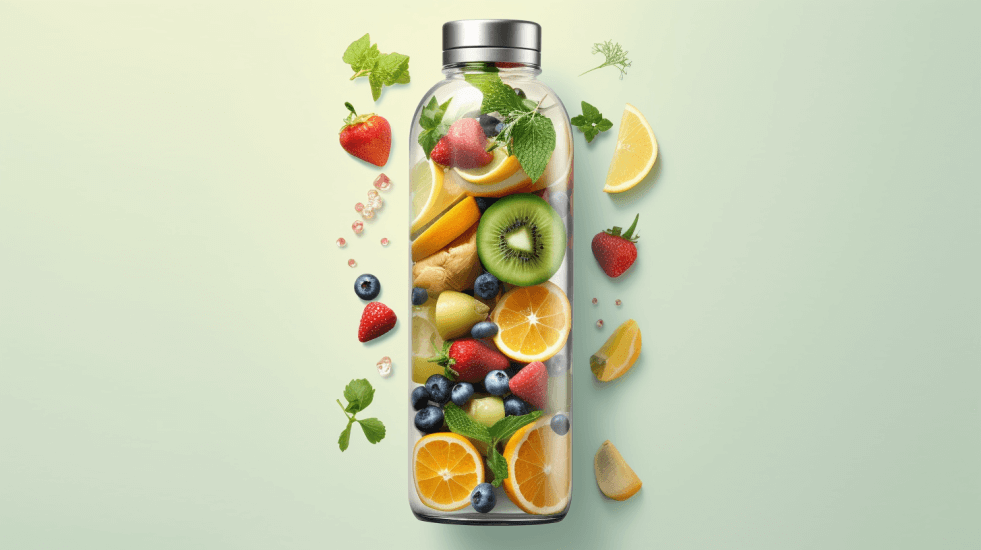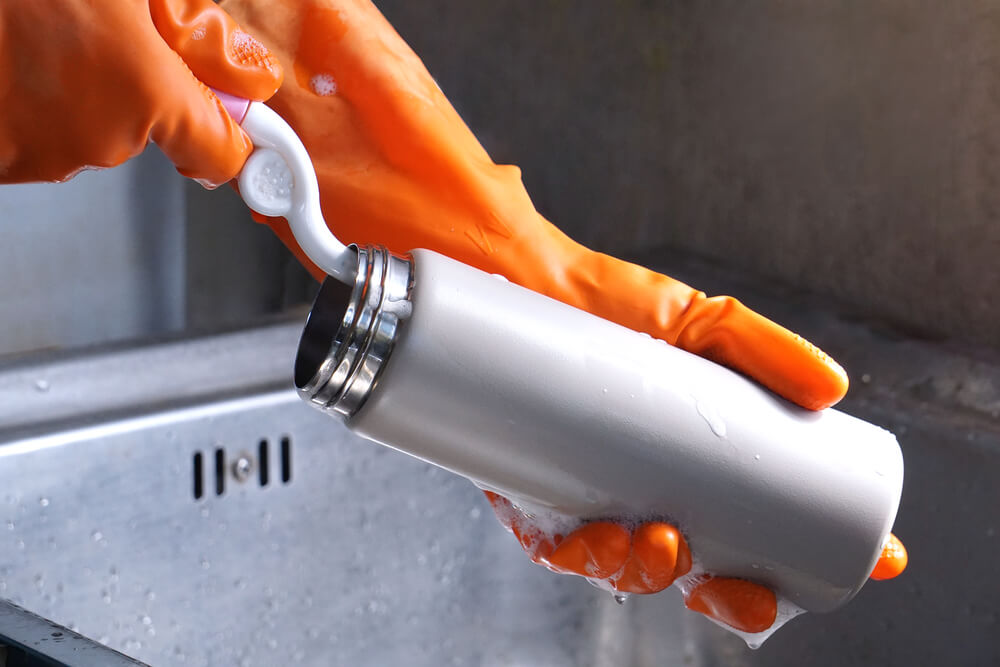If you're an avid hiker or outdoor enthusiast, chances are you've invested in a stainless steel water bottle to keep yourself hydrated on the go. But what about when it comes to adding salt to your water? Can you safely add salt to your stainless steel water bottle without damaging it?
To answer that question, we need to take a closer look at the properties of stainless steel and how they react with different substances. In this article, we'll explore the different grades of stainless steel commonly used in water bottles, the role of nickel and chromium in their composition, and the potential risks and effects of adding salt to your stainless steel water bottle.
By the end of this article, you'll have a better understanding of whether or not it's safe to add salt to your trusty stainless steel companion.
Understanding 18/8 and 304 Grade Stainless Steel
If you want a durable and rust-resistant stainless steel water bottle, go for one made of 18/8 or 304 grade steel. These two types of stainless steel are commonly used in the production of water bottles due to their high quality and corrosion resistance.
But which one is better? Let's take a closer look.
18/8 stainless steel contains 18% chromium and 8% nickel, while 304 grade stainless steel contains between 16-18% chromium and 6-10% nickel. Both grades offer excellent corrosion resistance, but the higher nickel content in 18/8 makes it slightly more resistant to rust and corrosion than 304 grade.
That being said, both grades are great choices for stainless steel water bottles, as they have similar properties when it comes to strength, durability, and performance. As long as you choose a reputable brand with high-quality materials and construction, you can trust that your water bottle will withstand years of use without any issues.
Whether you choose an 18/8 or a 304 grade stainless steel water bottle, you can rest assured that you're getting a top-quality product that will last for years. The main difference between these two grades is the slight variation in their composition, but both offer exceptional corrosion resistance and durability.
So go ahead and add salt to your stainless steel water bottle - it won't corrode or damage the material!
The Role of Nickel and Chromium in Stainless Steel
Understanding how nickel and chromium contribute to the durability of your drink container can help you make informed decisions about what to put inside. When it comes to stainless steel, these two elements play a crucial role in providing excellent corrosion resistance properties.
Since water bottles are meant for carrying liquids, it's essential to have materials that can resist rusting and other forms of corrosion. Nickel is responsible for enhancing the overall strength and toughness of stainless steel while chromium provides an additional layer of protection against oxidation.
However, it's not just about having enough nickel and chromium content in your bottle; the manufacturing process also plays a vital role. The quality of stainless steel depends on how well it's manufactured, which includes factors like temperature control and composition control during production.
A poor manufacturing process can result in low-quality stainless steel with insufficient amounts of nickel and chromium that may be prone to corrosion or toxicity issues when exposed to certain substances. Knowing more about nickel and chromium in stainless steel: corrosion resistance and toxicity, as well as their impact on manufacturing processes, is essential when considering what substances you want to store in your drinking container.
Stainless steel water bottles are generally safe for use with saltwater or salty liquids because they are highly resistant to rusting or corroding due to their high levels of nickel and chromium content. However, always ensure you purchase high-quality products from reputable brands that follow strict manufacturing standards for optimal performance and safety.
The Effects of Salt on Stainless Steel
Saltwater can cause damage to the durability of your stainless steel drink container. The effects of salt on stainless steel are primarily due to the presence of chloride ions. These ions will corrode the metal over time, causing it to weaken and potentially rust. This corrosion process can also affect the taste of your water, making it unpleasant to drink.
To prevent damage from saltwater, it's recommended that you don't put salt directly into your stainless steel water bottle. Instead, consider using a water filter with your bottle before adding any salts or minerals. A water filter can remove impurities from the water and improve its taste while protecting your stainless steel bottle from corrosion.
Using a stainless steel water bottle has many benefits for both you and the environment. However, it's important to be mindful of its limitations when it comes to exposure to saltwater. Taking simple precautions such as using a water filter can extend the life of your bottle while ensuring that you have clean and refreshing drinking water wherever you go.
Risks of Putting Salt in a Stainless Steel Water Bottle
If you're considering putting salt in your stainless steel water bottle, there are a couple of risks you should be aware of.
Firstly, the salt can cause damage to the bottle's surface, leading to corrosion and potential leaks.
Secondly, if the bottle isn't properly cleaned after use with saltwater, it can pose health concerns due to bacterial growth.
It's important to weigh these factors before deciding whether or not to add salt to your stainless steel water bottle.
Damage to Bottle
By putting salt in your stainless steel water bottle, you risk damaging the bottle due to its corrosive nature. Salt can cause pitting corrosion on the surface of your bottle.
Pitting corrosion is a type of localized corrosion that creates small pits or holes on metal surfaces. Once pitting corrosion has started, it can rapidly spread and compromise the integrity of the bottle.
To prevent corrosion caused by salt, there are several cleaning methods you can use. First, make sure to clean your stainless steel water bottle regularly with warm soapy water and a non-abrasive sponge or cloth. This will remove any residue or buildup that could lead to corrosion.
Second, consider using vinegar or baking soda as a natural cleaner for your stainless steel water bottle. These substances are effective at removing stains and buildup without damaging the surface of the bottle.
Finally, avoid leaving salty liquids in your stainless steel water bottle for extended periods of time. Emptying and rinsing out your bottle after each use will help prevent damage from occurring in the first place.
Health Concerns
Now let's explore the potential health risks of using a stainless steel water bottle for prolonged periods without proper cleaning.
One concern is the amount of salt intake that can occur from using a salt-filled solution to clean the bottle. When mixed with water, salt can corrode the inner lining of the stainless steel, which may lead to contamination and affect your health.
While stainless steel is generally considered safe for food and beverage storage, it's important to note that prolonged exposure to salty liquids can cause corrosion.
If you frequently use your water bottle for sports or outdoor activities where you sweat heavily, it's even more important to clean it thoroughly after each use. Neglecting proper cleaning may result in an accumulation of bacteria or harmful substances that could harm your health in the long run.
Therefore, be sure to properly maintain your stainless steel water bottle by following manufacturer instructions on how to clean and sanitize it regularly to avoid any potential risks associated with salt intake and corrosion.
Alternatives to Adding Salt in Your Water Bottle

Looking for alternatives to adding salt in your stainless steel water bottle? Consider using flavored powders, which are easy to find and come in a variety of flavors.
Another option is infusing your water with fruits and herbs, which not only adds flavor but also provides additional health benefits.
Experiment with different combinations until you find the perfect taste for you.
Using Flavored Powders
Sprucing up your stainless steel water bottle with flavored powders is a game changer! It not only adds a burst of flavor to your drink but can also provide various health benefits. Here are some reasons why using flavored powders in your water bottle is a great option:
- Variety: With so many different flavors available, you'll never get bored of drinking plain water. There's something for everyone, from fruity options like strawberry and orange to more unique ones like matcha and turmeric.
- Convenience: Flavored powders are easy to carry around and can be added to your water bottle on-the-go. Plus, they don't require any refrigeration or special storage.
- Health benefits: Many flavored powders contain vitamins and minerals that can boost your immune system or improve digestion. Some even have caffeine or other energy-boosting ingredients.
Overall, adding flavored powders to your stainless steel water bottle is an excellent way to make staying hydrated more enjoyable while also providing added health benefits. Give it a try and see how much tastier drinking water can be!
Infusing Water with Fruits and Herbs
Enhance your hydration experience by infusing fresh fruits and herbs into your reusable stainless steel water bottle. Infusing water with natural ingredients is a great way to add flavor without adding calories or sugar, making it a healthy alternative to sugary drinks.
Plus, the benefits of drinking infused water go beyond just taste. One of the biggest benefits of infusing water with fruits and herbs is that it can help you stay hydrated throughout the day. Drinking enough water is essential for maintaining good health, but sometimes plain water can be boring.
By adding fresh berries or citrus slices to your water bottle, you're more likely to drink more throughout the day. Some popular infusion recipes include cucumber and mint, lemon and ginger, or strawberry and basil. Experiment with different combinations until you find your favorite hydration strategy!
Cleaning and Maintenance of Stainless Steel Water Bottles

To keep your stainless steel water bottle in top condition, you should regularly clean it with a mixture of warm water and mild soap. Proper cleaning is essential for removing any harmful bacteria that may have accumulated inside the bottle. You can use a soft brush or sponge to scrub the inside of the bottle gently.
Rust prevention is another crucial aspect of maintaining your stainless steel water bottle. To prevent rust from developing on the surface, avoid using abrasive cleaners or harsh chemicals that can damage the metal's protective layer. After washing, be sure to dry your water bottle thoroughly to eliminate any moisture that could cause rusting.
In addition to regular cleaning, you should also take care not to scratch or dent your stainless steel water bottle. Avoid dropping it onto hard surfaces or exposing it to extreme temperatures.
By following these simple guidelines, you can ensure that your stainless steel water bottle remains in excellent condition for years to come.
Tips for Choosing the Right Stainless Steel Water Bottle
If you're on the hunt for a new hydration companion, there are a few things to keep in mind when selecting the perfect stainless steel container. Here are three tips to guide you:
- Consider the Benefits of Insulation: Insulated stainless steel water bottles can help keep your drinks cold or hot for hours. This is especially useful if you're planning on spending time outdoors or need to keep your drink at a specific temperature.
- Look for Eco-Friendly Options: Stainless steel water bottles are already a great eco-friendly alternative to single-use plastic bottles, but some brands go above and beyond by using recycled materials or offering reusable straws and caps.
- Size Matters: Whether you're looking for a bottle that fits in your purse or one that can hold enough water for an entire day's worth of activities, make sure to choose the right size for your needs. Keep in mind that larger bottles may be heavier and harder to carry around all day.
By keeping these tips in mind, you'll be able to find the perfect stainless steel water bottle that meets all of your needs and helps reduce waste at the same time!
Other Uses for Stainless Steel Water Bottles
Get creative with your reusable container and discover new ways to utilize it beyond just carrying water. Stainless steel water bottles aren't only durable and long-lasting, but they can also be used for a variety of purposes.
From storing dry goods to serving as a mini planter, these bottles offer endless possibilities. One way to get creative with your stainless steel water bottle is by opting for unique designs that showcase your personality. Many companies offer eco-friendly options that feature colorful patterns or artistic designs.
These creative designs not only add style to your everyday routine but also help reduce waste by eliminating the need for disposable cups or bottles. Another great use for stainless steel water bottles is as an eco-friendly lunch box alternative. Instead of using plastic bags or containers, pack your snacks or meals in a reusable container like a stainless steel bottle.
This not only reduces waste but also keeps food fresh and avoids any potential toxins from plastic containers. With the versatility of stainless steel bottles, there's no limit to how you can incorporate them into your daily life while being environmentally conscious at the same time.
Conclusion
In conclusion, adding salt to a stainless steel water bottle isn't recommended. The presence of salt can cause corrosion and pitting on the surface of the metal. This can lead to leaks and contamination of your drinking water. It's best to avoid using salt altogether in your water bottle.
Instead, consider adding flavor to your water with fresh fruit or herbs. You can also use electrolyte tablets designed for use in water bottles. When choosing a stainless steel water bottle, make sure it's made from high-quality 18/8 or 304 grade steel. These types of steel contain nickel and chromium for added durability and resistance to rust and corrosion.
With proper cleaning and maintenance, a stainless steel water bottle can last for years. It can be used for more than just hydration on-the-go. Consider using it for hot beverages like coffee or tea, storing snacks like nuts or trail mix while hiking, or even as a mini flower vase at home. The possibilities are endless with this versatile and eco-friendly accessory.

